Why I Love Imari Ware (and Want You to Love It Too)
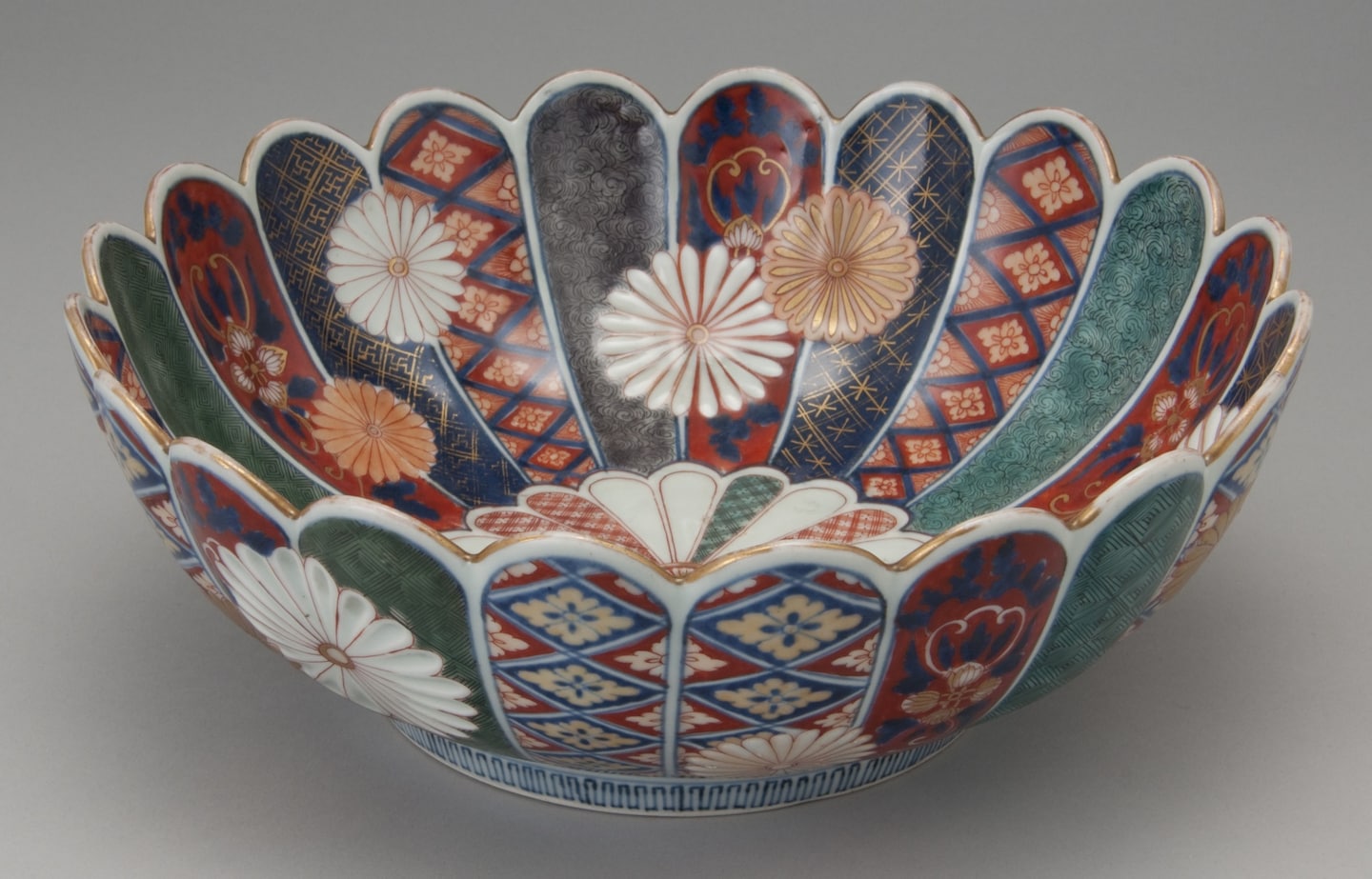
Chrysanthemum-shaped bowl, 1690-1710s. Part of the renowned Mr. and Mrs. Shibata Collection at the Kyushu Ceramic Museum in Arita, Japan.
By Alice GordenkerArts writer Alice Gordenker shares her appreciation of a type of Japanese antique porcelain that has captivated people all over the world for more than 400 years.
To Have and to Hold: Beauty Close at Hand
Cups decorated with a design in underglaze blue of clouds and the character 寿, meaning longevity. Late 18th-early 19th c. Toguri Museum of Art
Let’s say I’ve been banished to a deserted island, exiled to live out the rest of my days alone. And that as I pack, I’m allowed to take only one type of Japanese ceramics. Difficult choice? Not for me: I’d fill my boat with Imari ware! Sure, there’d be tears as I bid farewell to exuberant Oribe. And I’d miss quiet Bizen. But with Imari I know I’ll never be bored.
Why such affection for Imari ware? Because there’s so much to love! Created by many hands at many kilns over hundreds of years, Imari ware offers incredible variety in shape, color, design, and function. What’s more, it’s within reach. You can see Imari ware at fine museums all over the world, of course, but very good pieces also turn up in antique shops, flea markets, and even thrift shops. Search the family cupboards and you might turn up a happy surprise.
What is Imari Ware?
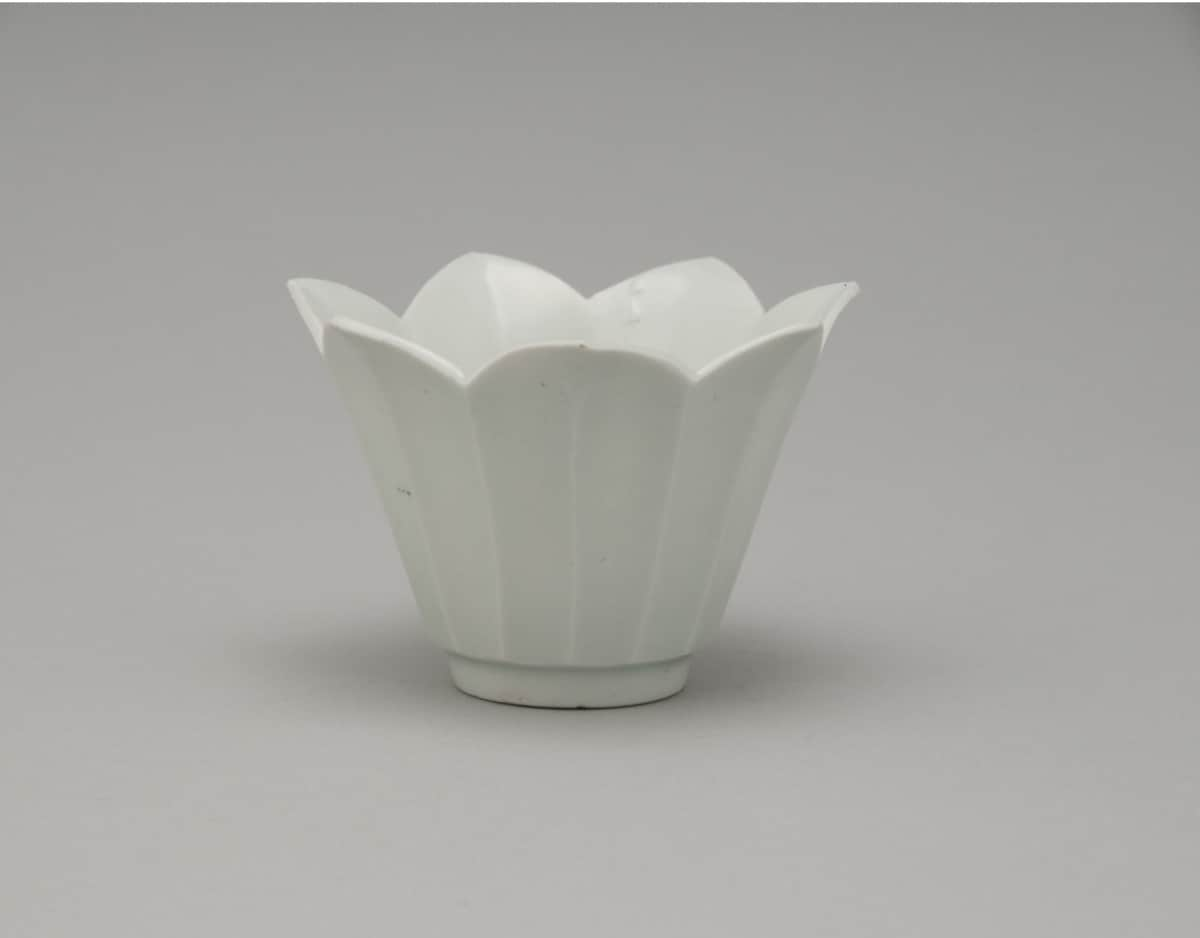
Flower-shaped cup, probably for serving tasty morsels of food at a banquet. White porcelain, 1650s. Kyushu Ceramic Museum, Shibasawa Collection.
Imari ware is the first porcelain made in Japan, with a history dating back more than 400 years. Unlike earthenware, which is made from clay dug from the ground, porcelain is made from crushed stone mixed with the mineral kaolinite. In Japan, these materials were first found around 1610 in the hills around Arita, in Kyushu (in what is now Saga Prefecture). The discovery was made by Korean potters who had been brought to Japan following a Japanese invasion of the Asian continent. Within a few years, they succeeded in making Japan’s first domestically produced porcelain, ending China’s long monopoly over the highly prized commodity. Product was shipped from the nearby port of Imari, which is how Japan’s first domestically produced porcelain came to be known as Imari ware.
Early Imari: Charming Simplicity
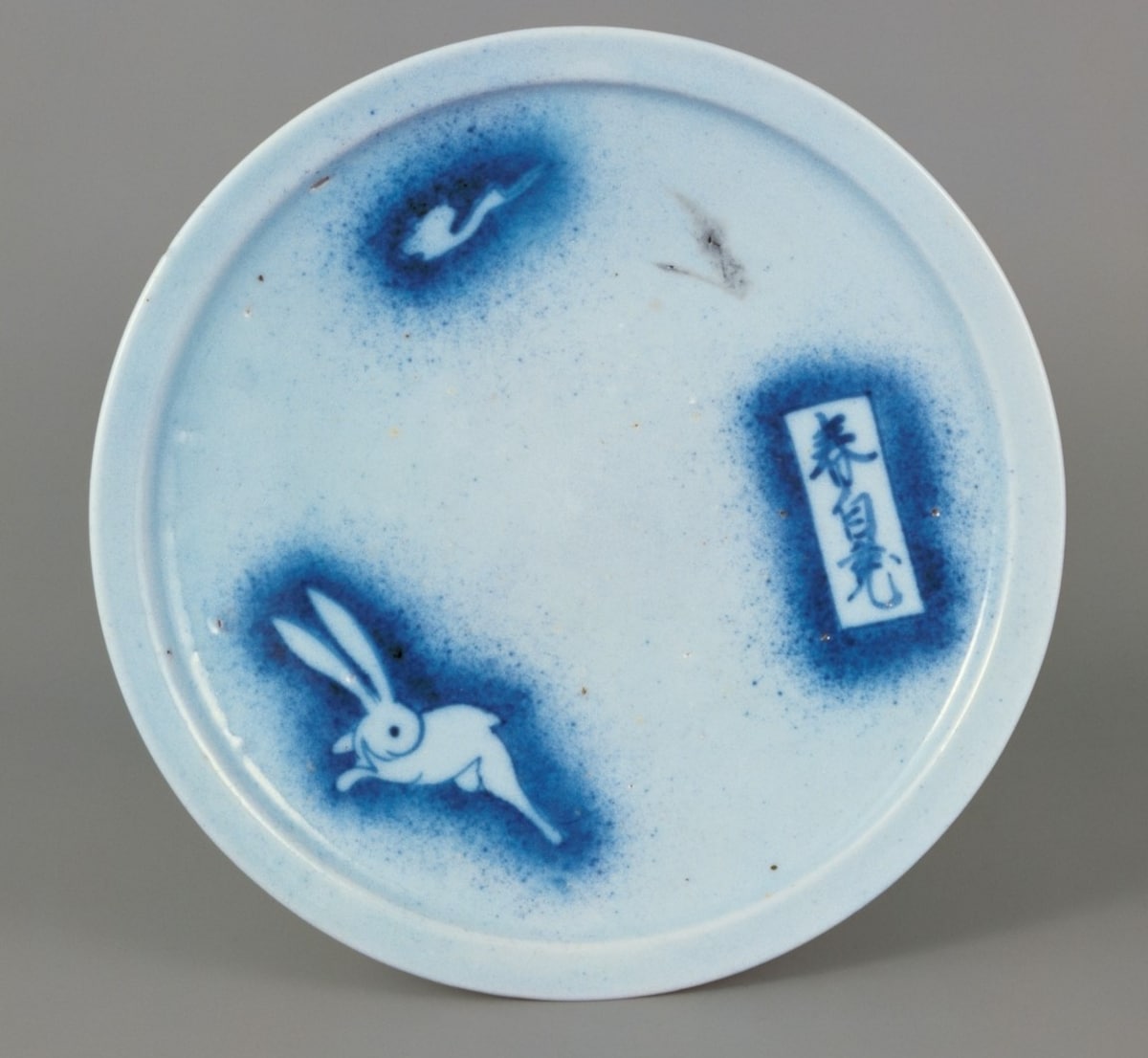
A sweet example of the sprayed-pigment decoration often seen in early Imari ware. The characters in the banner read 春白兎 (white hare in spring). Early 17th c. Toguri Museum of Art
In the early decades of the industry—the first half of the 17th century—the artisans at Arita were still developing the craft. At first, most of the production was blue and white, with simple decoration applied with a cobalt-based pigment before glazing and firing. Designs were spare and often inspired by nature, featuring birds, flowers and grasses rendered in swift and spontaneous brushwork. Another decorating technique, called fukizumi, involved spraying the pigment around paper stencils to create a background of fine dots. Early Imari ware displays a charming simplicity that is quite distinct from later designs, which tend to be more intricate and studied.
Around the middle of the century, Imari ware became more colorful. This was thanks largely to the introduction of new technology carried to Japan by Chinese potters fleeing civil war in their home country. Now the Arita kilns were able to produce thinner works with sharper shapes, which they decorated with colorful overglaze enamels. At the same time, the political unrest in China disrupted that country's trade and the Dutch East India Company, which had been buying huge quantities of Chinese porcelain for resale in Europe, turned to Japan as an alternate supplier. This spurred further expansion and innovation in Arita.
Names Worth Learning: Ko-Kutani, Kakiemon and Nabeshima
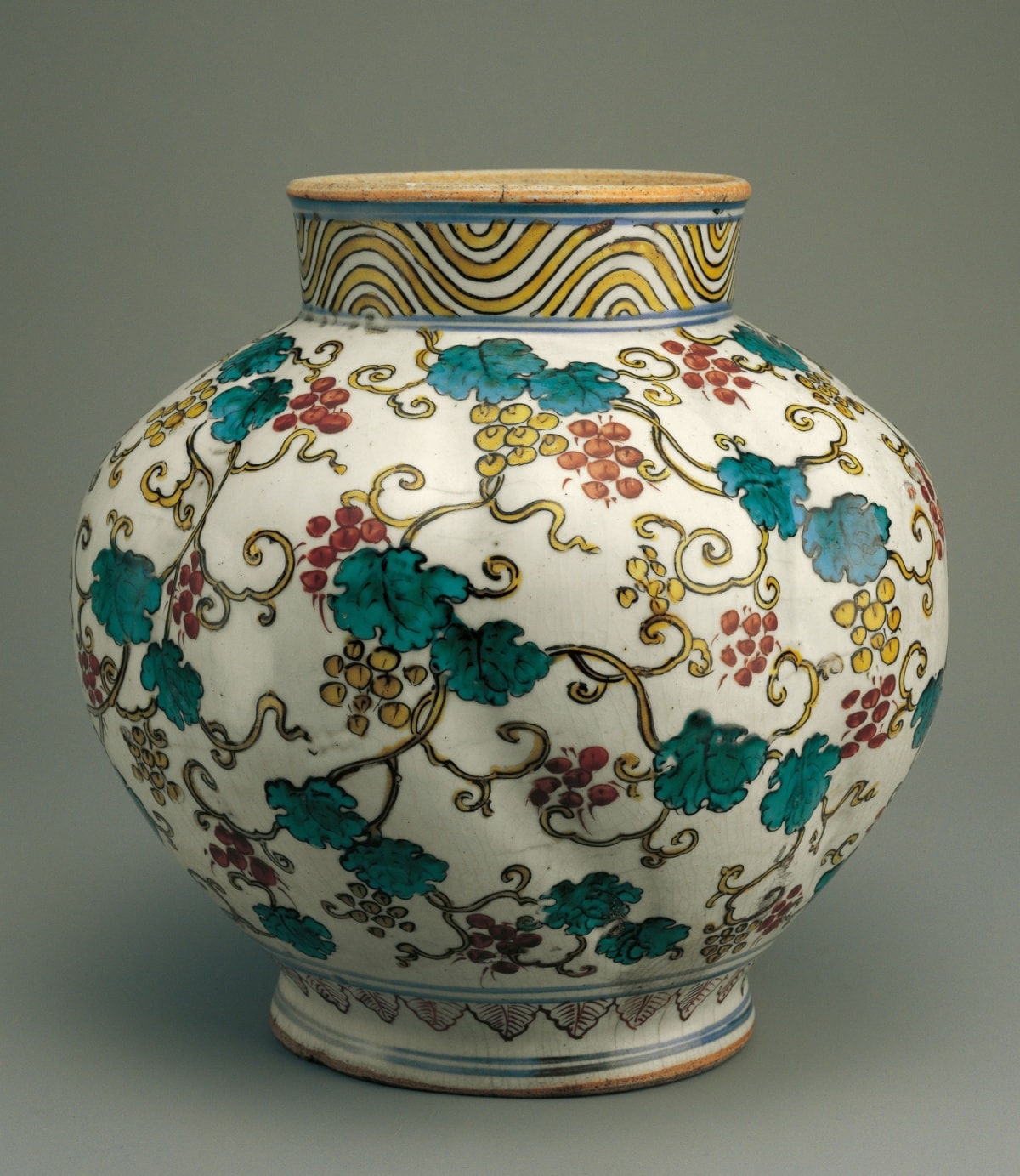
Melon-shaped jar decorated with grapevine design in underglaze blue and overglaze enamels. Imari ware in the Ko-Kutani style. Mid-17th century. Toguri Museum of Art
The first real attempt to understand and classify these changes began in the 1920s, when Japanese scholars started to study the porcelain made in and around Arita in preceding centuries. Reflecting the tastes of the time, perhaps, these scholars didn’t show much interest in the early blue-and-white pieces, which were often clumsy in execution. They focused instead on the polychrome pieces, identifying three styles they considered to be particularly attractive. The categories they created, which came to be known as Ko-Kutani, Kakiemon and Nabeshima, are still widely used today.
But research in recent years, and the discovery of transitional pieces bearing signs of more than one style, make it clear that what was once considered three distinct styles are more inter-related than originally thought. It’s useful to know the characteristics of each style, but trust your eyes more than someone else’s labels.
Heart-stopping Designs
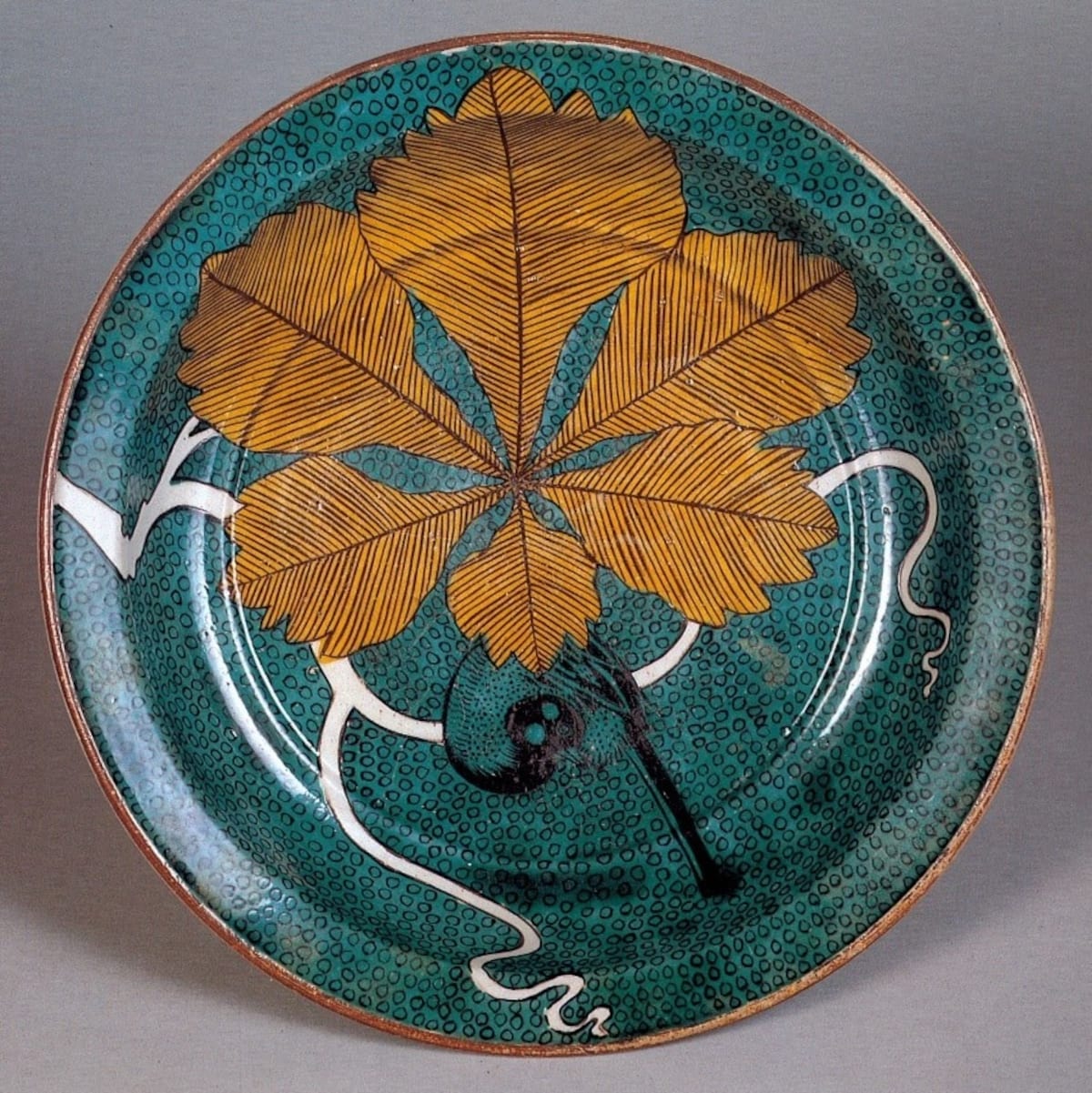
Can you spot the bird? This large dish with an oak-leaf design is a stunner, decorated in overglaze enamels. Imari ware in Ko-Kutani style. Mid-17th c. Toguri Museum of Art
That said, my pulse definitely does quicken when I see a good piece identified as in the Ko-Kutani style, which was produced from around the 1640s and traded almost exclusively in the domestic market. The designs are often startlingly bold, and the colors—including intense shades of purple, yellow, greens and black—stop you in your tracks. Sometimes the decoration will cover the entire surface, front, and back, probably to hide less than ideal color in the porcelain base.
Birds, Flowers, and Not So Ferocious Tigers
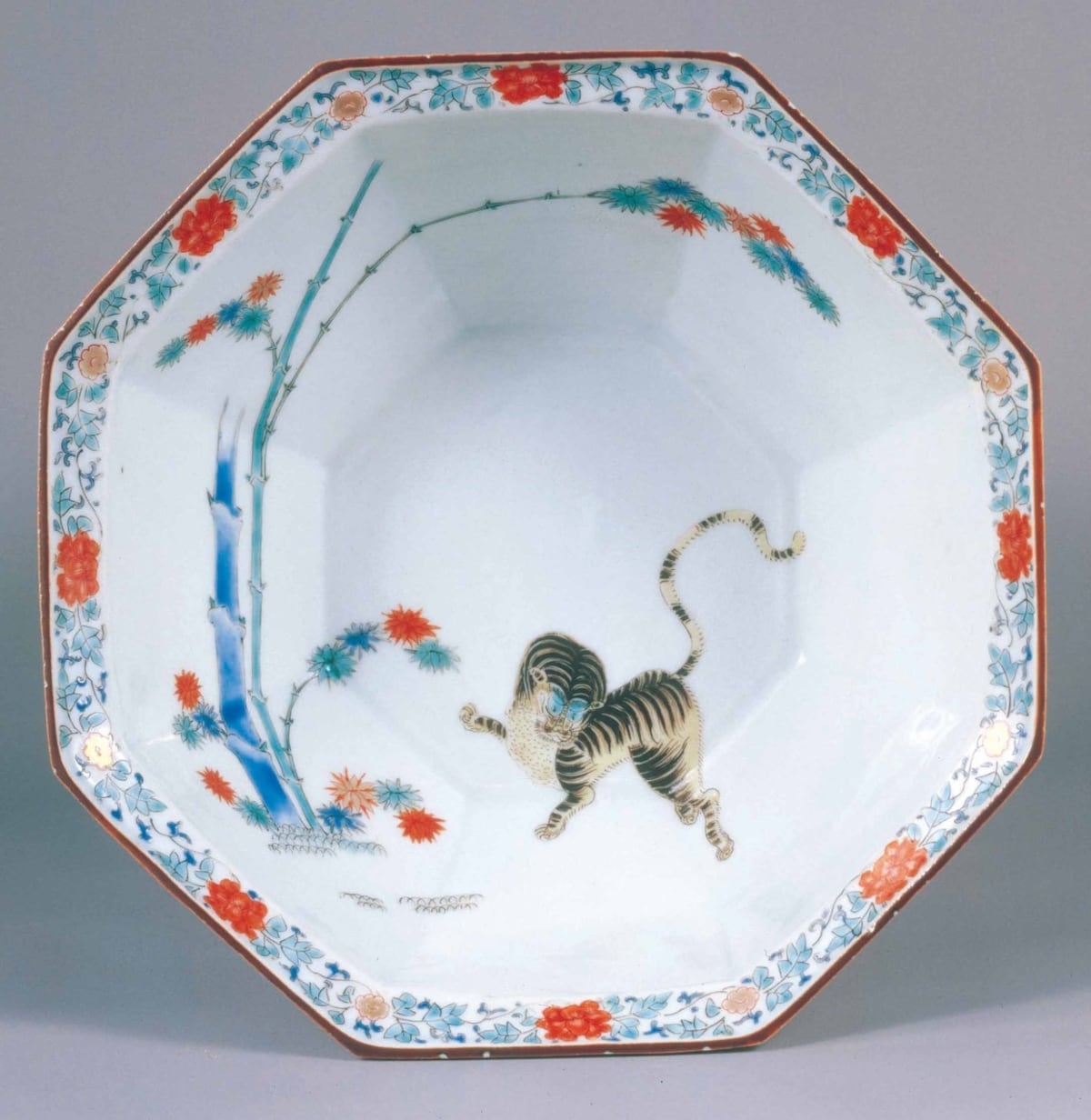
With an assymetrical design and masterful use of empty space, this dish is an excellent example of Imari ware in the Kakiemon style. Second half of the 17th century. Toguri Museum of Art
The Kakiemon style, in contrast, which emerged around the 1670s and was produced mostly for export, is characterized by a nearly pure white base. This is the result of significant improvements in preparation and handling of the clay. Decoration on works in the Kakiemon style is usually understated and sparsely applied, with asymmetrical designs that make good use of empty space, all the better to show off the snowy-white background.
Kakiemon designs were particularly popular in Europe, where it became fashionable among the nobility to decorate their palaces with entire walls of Asian porcelain. Because these pieces were intended only for display, the backs are often plain with no decoration. Later, when Europeans learned to make their own porcelain, Kakiemon patterns from Japan were widely copied, most notably by the Meissen factory in Dresden.
At Your Service: Adapting to the Needs of Different Markets
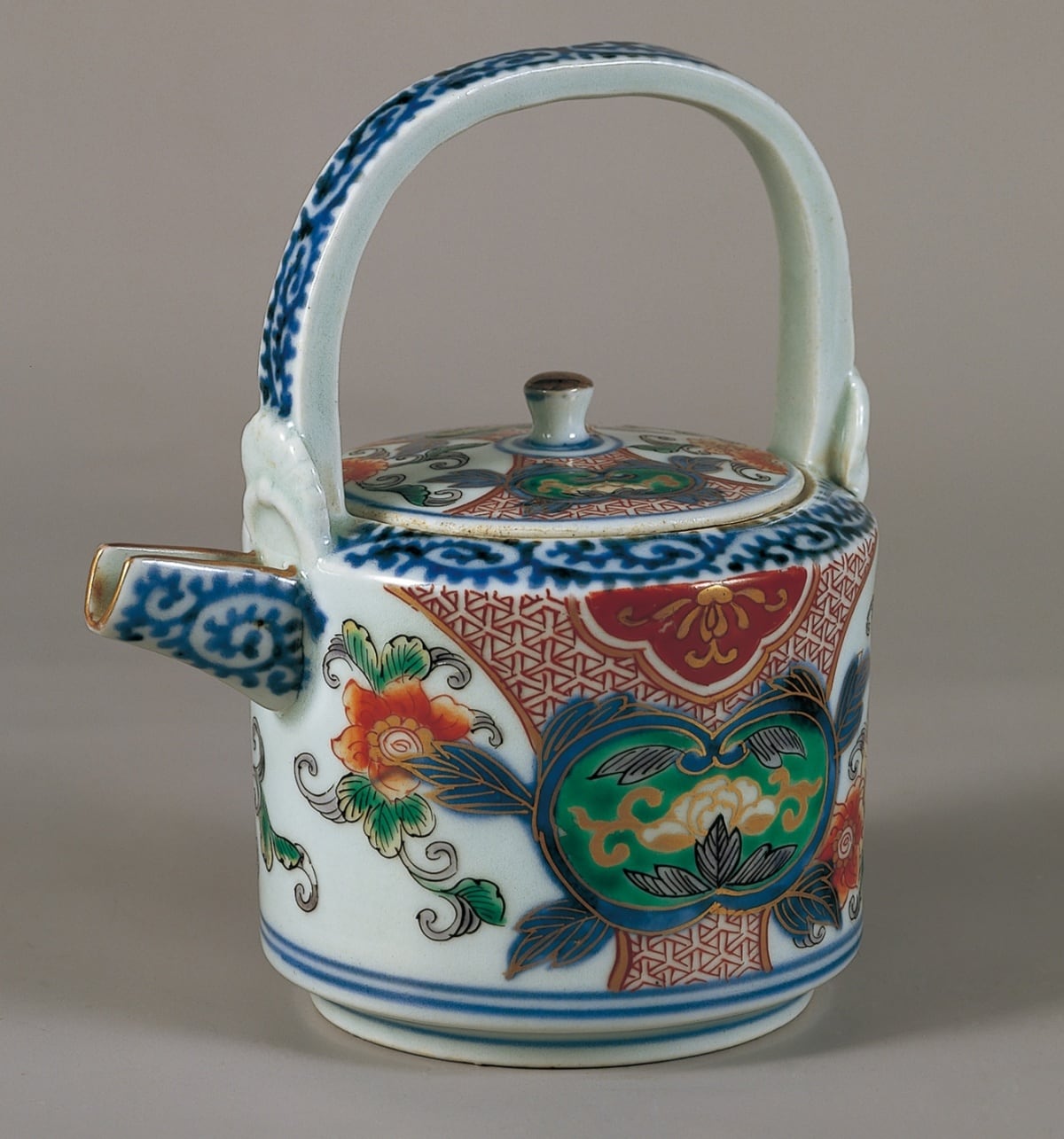
Not a teapot. This vessel is called a "chōshi" and is for serving sake. Lovely peony design in underglaze blue, overglaze enamels and gold. Imari ware. First half of the 18th century. Toguri Museum of Art
Demand from Western markets led to the development of other products specifically for export, some for practical use, including spittoons and shaving bowls. My favorite example are the sets of cruets for the table that were marked with alphabet letters so European diners could tell which condiment was which, such as “O” for olie and “A” for azijn, the Dutch words for oil and vinegar, respectively. There were also, of course, products that traded primarily in the domestic market, including handwarmers that accept a piece of lighted charcoal, and charming vessels in all shapes and sizes made specifically for serving sake.
Gifts of Tribute
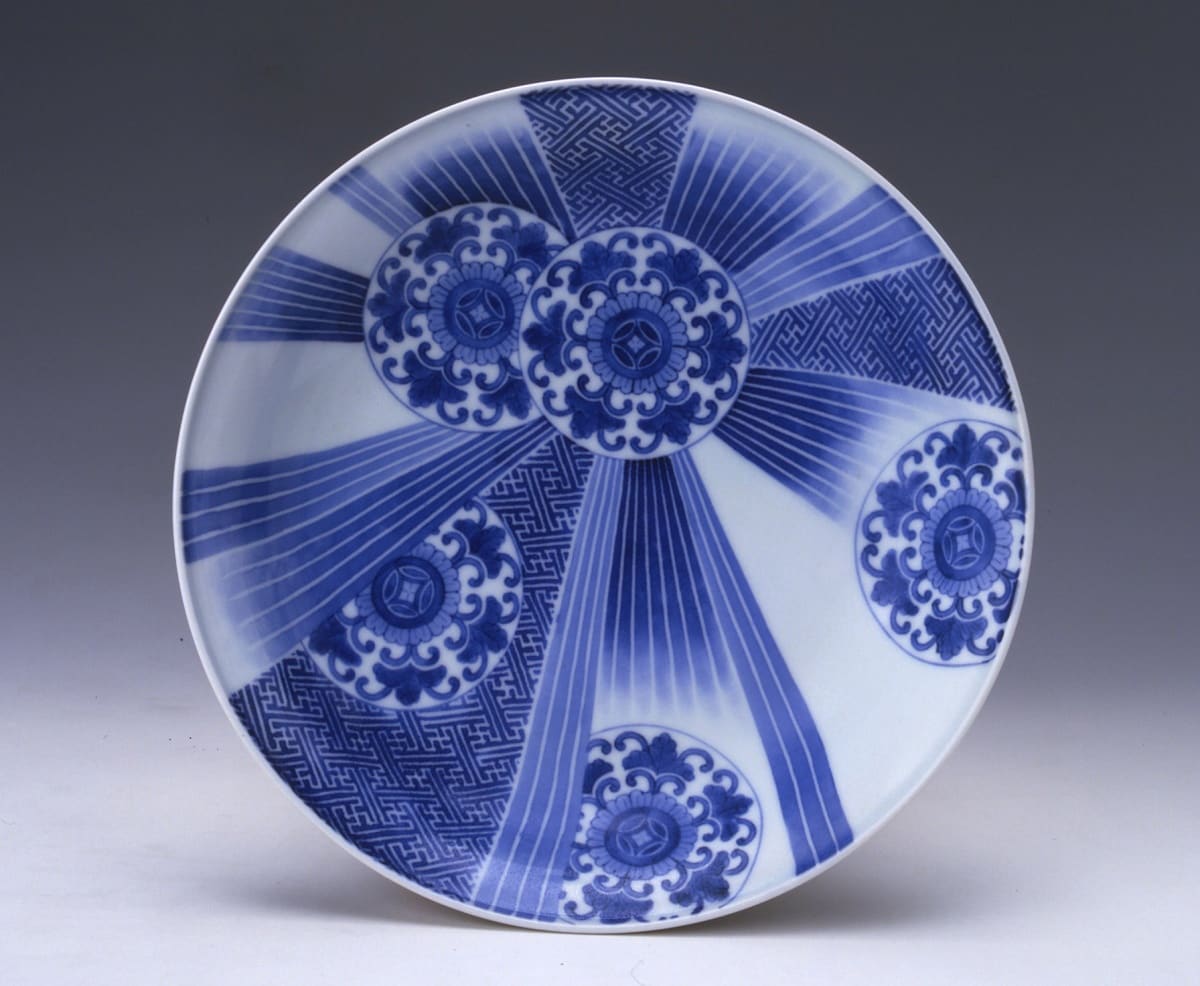
Nabeshima dish with stylized chrysanthemum design, 1690-1730s. Kyushu Ceramic Museum.
As I load my boat for exile, I will be sure to tuck in a few particularly fine pieces usually identified as Nabeshima ware. I might get pushback, as some will argue that Nabeshima is a separate category distinct from Imari ware. But both were made in the Arita area, using the same materials, and by artisans trained in the same techniques. The main difference is that Nabeshima was not sold on the open market and was made exclusively as gifts of tribute to the shogun and other high-ranking officials. Its manufacture followed strict rules about size, quality, color and designs. Some of the designs seem so startlingly modern that it’s hard to believe they were created hundreds of years earlier.
I hope I've sparked your interest in getting to know Imari ware. Remember that love comes in many forms, so your relationship can be as casual as an occasional museum visit. Or become an all-consuming passion.
Enjoy this article? Like this author? Check out her companion piece, Why I Love Nihonga (and Want You to Love it Too).
Recommended Museums in Japan for Imari Ware
If you can travel to Kyushu, go to the source: the town of Arita, where Imari ware was made. A major draw at the Kyushu Ceramic Museum, a public institution, is the Mr. and Mrs. Shibata Collection—over 10,000 pieces of Edo-era porcelain made for the domestic market. A spacious gallery is given over entirely to this collection, with approximately 1,000 pieces on display at any one time. Look also for the large display of Imari ware for export, which beautifully demonstrates how Arita potters adapted to the needs of different overseas markets.
Kyushu Ceramic Museum
Toshakuotsu 3100-1
Arita, Saga 844-8585
+81 (0) 955-43-3681
Top in Tokyo
Tokyo, too, provides excellent opportunities to see Imari ware. The Toguri Museum of Art, located just 15 minutes on foot from bustling Shibuya station, specializes in fine Asian porcelain and boasts a top-notch collection. Exhibitions generally include a good showing of 70 to 80 examples of the finest Imari ware. Check the website for details.
Toguri Museum of Art
1-11-3 Shoto, Shibuya-ku
150-0046 Tokyo
+81 (0) 3-3465-0070
To see a small number of top-quality pieces of Imari ware within the broader context of Japanese art and cultural history, stop by the Japanese Gallery of the Tokyo National Museum in Ueno Park.
Tokyo National Museum
13-9 Uenokoen,
Taito-ku, Tokyo 110-8712
+81-(0)3-3822-1111
The Nezu Museum, noted for its beautiful garden, has a strong collection of Japanese painting, tea utensils, sculpture and ceramics. Choice pieces from its collection of Imari ware are often on display. Check the museum website before visiting.
Nezu Museum
6-5-1 Minamiaoyama
Minato -ku, Tokyo 107-0062
+81 (0) 3-3400-2536



